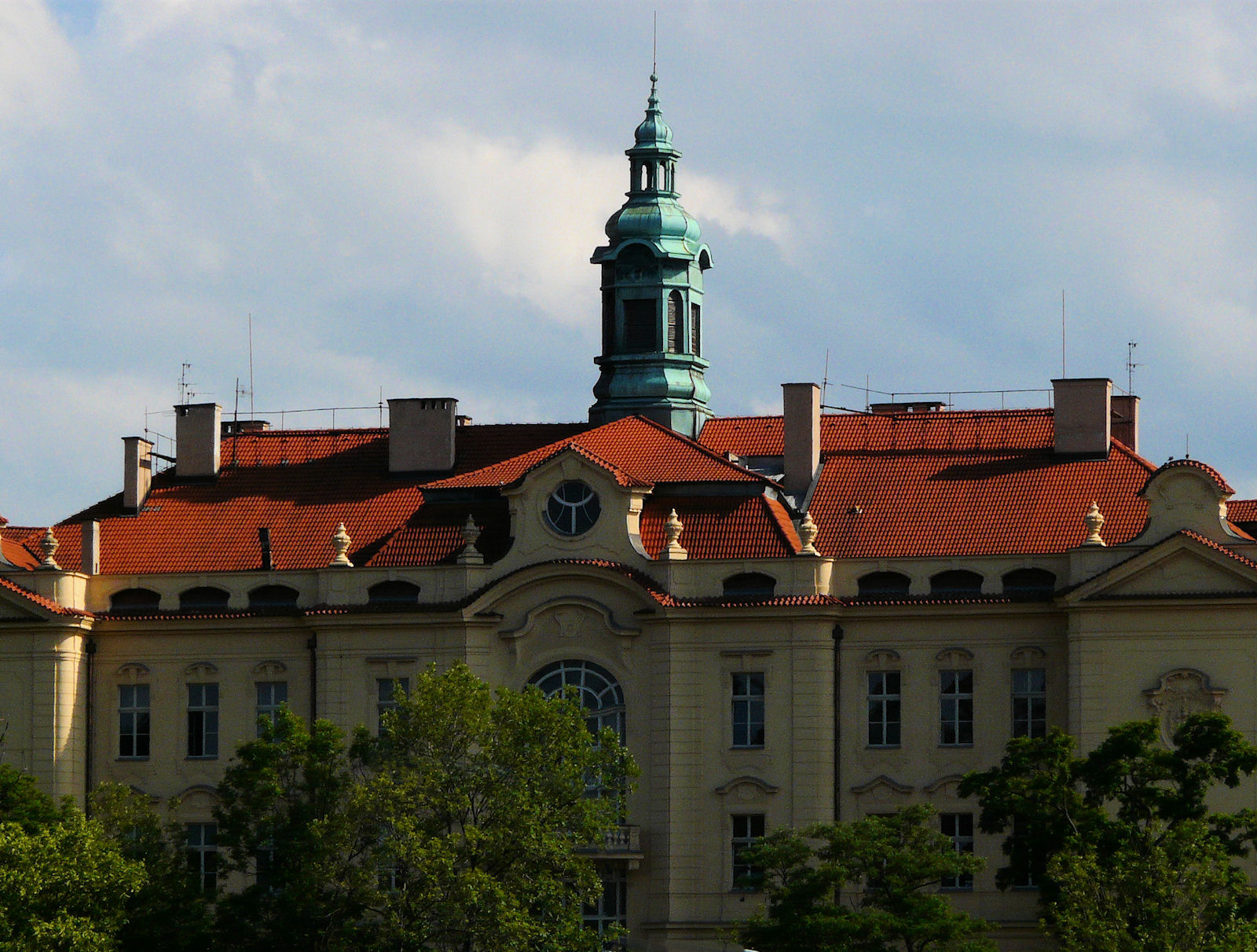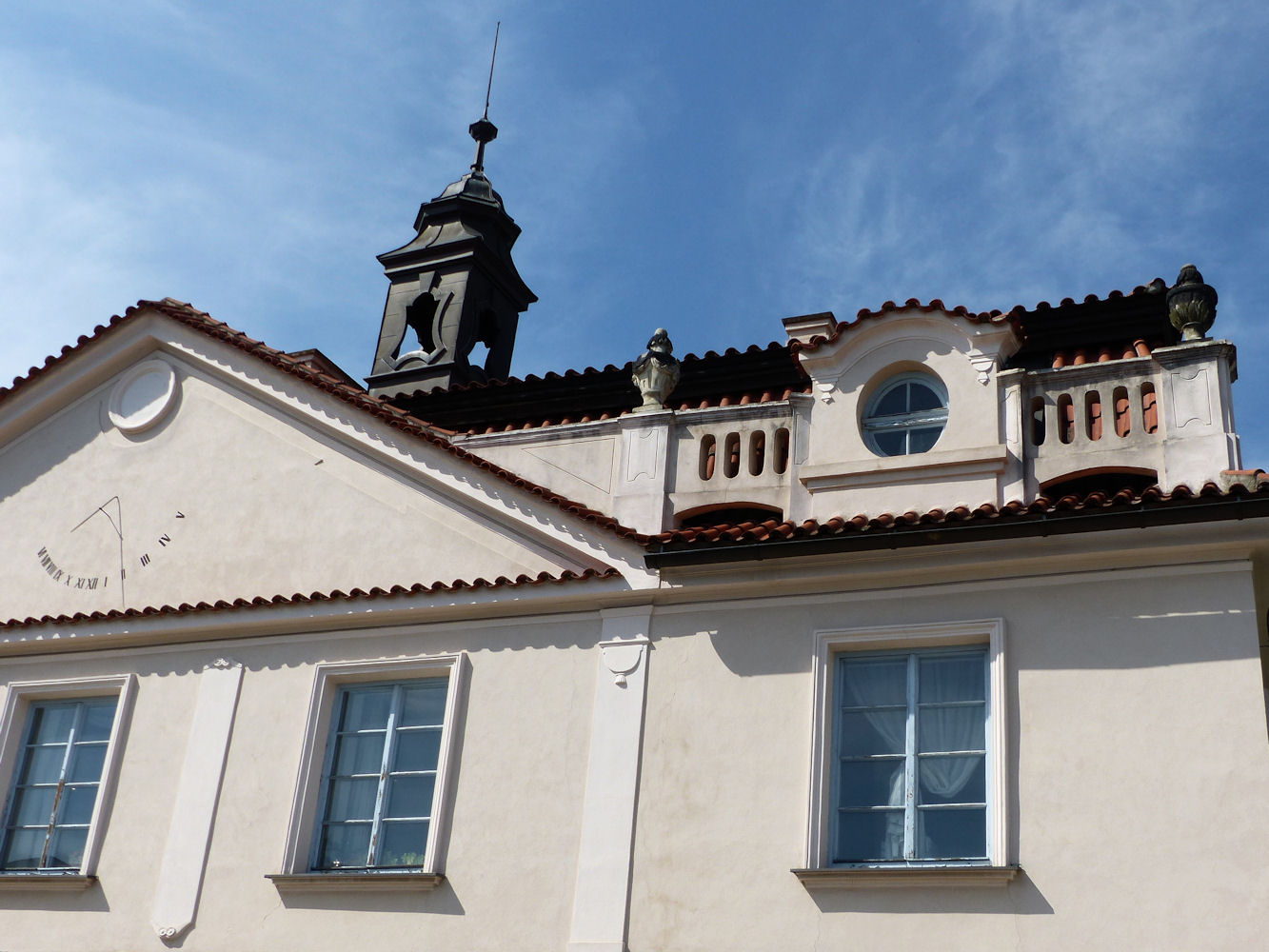Bulovka: Vychovatelna and Rokoska
Entering the city limits, drivers approaching Prague from the north encounter a dramatic sight. Dominating the high ridge to their left, a brooding neo-baroque chateau suddenly hoves into view like a great three-storey ship sailing the horizon.
Nowadays this building forms part of the Bulovka hospital complex, but when it was built in 1907 the purpose of the ‘Vychovatelna’ (from the Czech word for ‘upbringing’) was just that: the raising of juvenile delinquents to turn them into good upright citizens. The institute, proposed in the 1880s by the philanthropist Vojtěch Náprstek, had originally been housed in a real baroque chateau in nearby Libeň, and presumably the authorities were keen that disaffected youth should continue to be housed amid aspirational cornices and towering cupolas, even if they were copies of an earlier style.
To apply such decorative expertise to the building, the authorities called on the pioneering photographer and cinematographer Jan Křizenecky. Not only had Křizenecky trained as an architect; he had form in public buildings, having partnered on projects such as the high school in Nymburk and the theatre in Mladá Boleslav.
Although many times bigger in scale, Křizenecky’s reformatory was clearly inspired by the neighbouring baroque farmstead called Rokoska, constructed in 1770 for the landowner Prokop Gindel. This comparatively dainty structure with its original sundial still stands, along with the ruins of its accompanying chapel, not more than a hundred yards from its later, more flamboyant neighbour.
The land that falls away to the south behind the two buildings was once an extensive vineyard named ‘Great Vačeška’. When Gindel lived here there were eight acres of crops and two for vines. But from the end of the First World War until 1931, those ten acres were incrementally converted into what was to become one of the country’s leading hospitals, ‘Na Bulovce’, or simply ‘Bulovka’.
On a sunny day in May 1942, Reinhard Heydrich, Hitler’s deputy in Bohemia, left his home to drive to his office at Prague Castle. As his car turned the corner on to the main thoroughfare, he too would have seen the great baroque pile of the Vychovatelna rising up on the ridge. Its monumental appearance no doubt excited the imagination of the so-called ‘Butcher of Prague’, the man who had chaired the notorious Wannsee conference only five months earlier and whose name was synonymous with the worst atrocities of the war.
Moments later Heydrich was attacked by a team of heroic Czech paratroopers — the culmination of the meticulously-planned Operation Anthropoid. The injured obergruppenführer was unceremoniously conveyed to this hospital in a truck carrying tins of floor polish. Although he was successfully operated on in building number 5 (now named after Dr Bohumil Budín, murdered by the Gestapo), Heydrich died eight days later.
His wrecked car was abandoned on the street just below Bulovka hill, where a momument to the event now stands.









